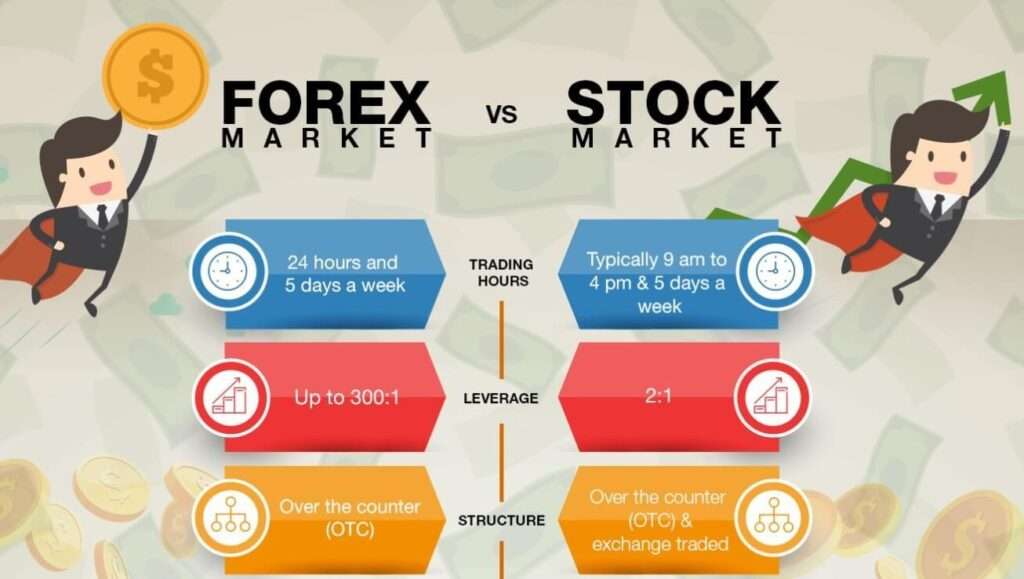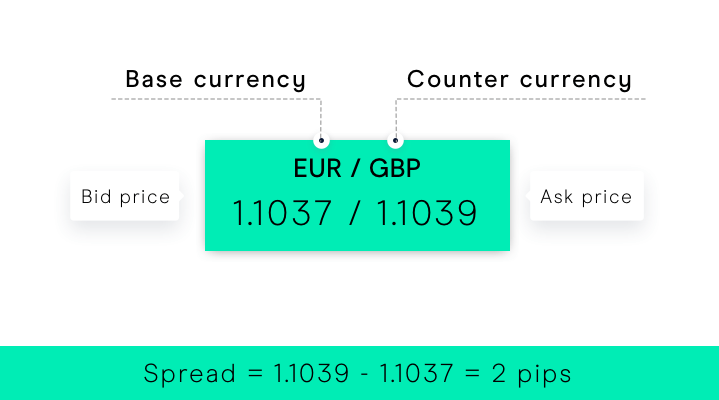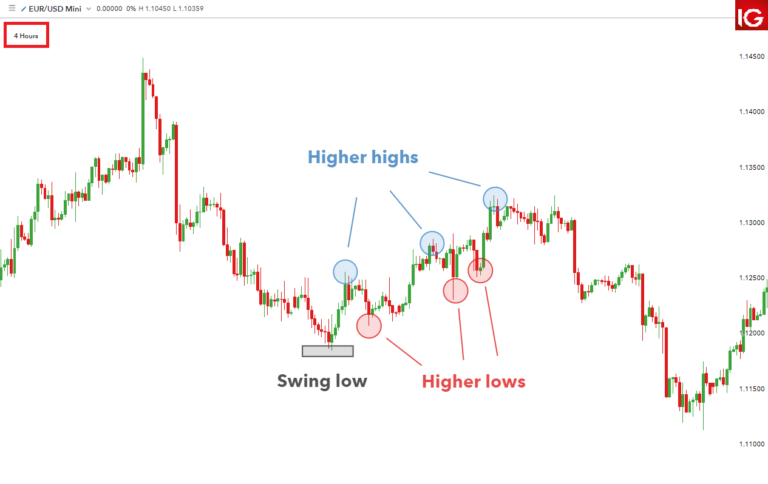Introduction
Investing in financial markets offers numerous opportunities for individuals to grow their wealth. Two popular avenues for investment are Forex trading and stock trading. Both markets have their own sets of advantages and disadvantages, and understanding them is crucial for making informed investment decisions.
Pros and Cons of Forex Trading
Forex trading, also known as foreign exchange trading, involves the buying and selling of currencies. Here are some pros and cons:
Pros:
- High Liquidity: The forex market is the most liquid financial market in the world, with trillions of dollars traded daily. This high liquidity ensures ease of entering and exiting trades without significant price movements.
- Accessibility: Forex trading is accessible 24 hours a day, five days a week, allowing traders to participate in global markets at their convenience.
- Leverage: Forex trading offers high leverage, allowing traders to control large positions with relatively small amounts of capital, amplifying potential profits.
- Diversification: Forex trading allows for diversification across different currency pairs, providing opportunities to profit in various market conditions.
Cons:
- High Volatility: The forex market can experience rapid and unpredictable price movements, leading to increased volatility and potential losses.
- Complexity: Understanding the factors influencing currency movements, such as geopolitical events and economic indicators, requires a deep understanding of global markets.
- Market Manipulation: Due to its decentralized nature, the forex market is susceptible to manipulation by large financial institutions and central banks, leading to sudden price spikes or crashes.
- Risk of Losses: The high leverage offered in forex trading also increases the risk of significant losses if trades move against the trader.
Pros and Cons of Stock Trading
Stock trading involves buying and selling shares of publicly traded companies. Here are some pros and cons:
Pros:
- Ownership: When you buy stocks, you become a partial owner of the company, allowing you to benefit from its growth and profitability through capital appreciation and dividends.
- Transparency: Stock markets are highly regulated, providing transparency and ensuring fair trading practices for investors.
- Long-Term Growth: Historically, stocks have provided attractive long-term returns, outperforming many other investment options, such as bonds or savings accounts.
- Diverse Investment Options: Stock markets offer a wide range of investment opportunities across various sectors and industries, allowing investors to build diversified portfolios.
Cons:
- Market Volatility: Stock prices can be volatile, influenced by factors such as economic conditions, corporate earnings, and investor sentiment, leading to fluctuations in portfolio value.
- Market Timing: Timing the market can be challenging, as stock prices are influenced by numerous unpredictable factors, making it difficult to consistently buy low and sell high.
- Company-Specific Risks: Investing in individual stocks exposes investors to company-specific risks, such as poor management, competitive pressures, or industry disruptions.
- Limited Trading Hours: Stock markets operate within specific trading hours, limiting accessibility compared to the forex market.
Key Differences Between Forex Trading and Stock Trading
Expanding on the key differences between Forex trading and stock trading:
- Market Structure:
- Forex Trading: In forex trading, currencies are traded over-the-counter (OTC), meaning transactions occur directly between parties, typically facilitated by banks, brokers, or electronic trading platforms. There is no centralized exchange, and trading takes place globally across different financial centers.
- Stock Trading: Stock trading involves buying and selling shares of publicly traded companies on organized exchanges such as the New York Stock Exchange (NYSE), Nasdaq, or other regional exchanges. These exchanges act as centralized marketplaces where buyers and sellers meet to execute trades.
- Asset Class:
- Forex Trading: The primary asset class in forex trading is currencies. Traders speculate on the exchange rate fluctuations between currency pairs, such as EUR/USD (Euro/US Dollar) or GBP/JPY (British Pound/Japanese Yen).
- Stock Trading: Stock trading deals with ownership stakes in publicly traded companies. Investors buy and sell shares of companies listed on stock exchanges, aiming to profit from changes in stock prices or dividends.
- Trading Hours:
- Forex Trading: The forex market operates 24 hours a day, five days a week, starting from the opening in Australia on Sunday evening (GMT) and closing in New York on Friday evening. This continuous trading allows participants from around the world to engage in forex trading at any time, except for weekends when trading is closed.
- Stock Trading: Stock markets have specific trading hours dictated by the exchange on which the stocks are listed. For example, the NYSE and Nasdaq operate from Monday to Friday during regular trading hours, typically from 9:30 AM to 4:00 PM (Eastern Time). Stock markets are closed on weekends and holidays.
- Leverage:
- Forex Trading: Forex trading offers high leverage, allowing traders to control larger positions with a relatively small amount of capital. Leverage ratios can vary depending on the broker and regulatory requirements, but it’s not uncommon for forex traders to have access to leverage ratios of 50:1, 100:1, or even higher. While leverage magnifies potential profits, it also amplifies losses, making risk management crucial in forex trading.
- Stock Trading: Leverage in stock trading is generally lower compared to forex trading. Margin accounts offered by brokers allow traders to borrow funds to purchase stocks, but the leverage ratios are typically lower, often capped at 2:1 or 4:1. Some advanced trading strategies may involve higher leverage through derivative products like options or futures, but these carry additional risks and complexity.
Understanding these key differences is essential for investors and traders to navigate the unique characteristics and opportunities presented by forex and stock markets effectively. Whether choosing to trade currencies or stocks, individuals should consider factors such as market structure, asset class, trading hours, and leverage, aligning their strategies with their financial goals and risk tolerance.
Factors to Consider When Choosing Between Forex and Stocks
Expanding on the factors to consider when choosing between Forex and stocks:
- Risk Tolerance:
- Forex Trading: Forex markets are known for their high volatility, which can lead to rapid price fluctuations and increased risk exposure. Currency pairs can be influenced by various geopolitical events, economic indicators, and central bank policies, contributing to market unpredictability. Investors with a higher risk tolerance and the ability to manage volatility may find forex trading appealing.
- Stock Trading: While stock markets also experience volatility, it tends to be lower compared to forex trading. Stocks are influenced by company-specific factors, industry trends, and broader market conditions, which may result in less frequent and less severe price movements. Investors with a lower risk tolerance may prefer the relatively stable nature of stock trading.
- Market Knowledge:
- Forex Trading: Successful forex trading requires a deep understanding of global economics, geopolitical events, and currency market dynamics. Traders need to analyze economic indicators, central bank policies, interest rate decisions, and geopolitical developments to anticipate currency movements accurately. Proficiency in technical analysis tools and chart patterns is also essential for executing trades effectively.
- Stock Trading: Stock trading involves analyzing individual companies, their financial statements, competitive positioning, industry trends, and broader market trends. Investors need to assess company fundamentals, earnings reports, management quality, and growth prospects to make informed investment decisions. Additionally, understanding technical analysis can help identify entry and exit points for stock trades.
- Trading Hours:
- Forex Trading: The forex market operates 24 hours a day, five days a week, providing continuous trading opportunities across different time zones. This flexibility allows traders to participate in global markets at any time, accommodating individuals with varying schedules and preferences.
- Stock Trading: Stock markets have specific trading hours determined by the exchange on which the stocks are listed. Trading typically occurs during regular market hours, which may vary depending on the exchange and region. While this structured approach provides clarity and predictability, it may limit accessibility for investors with constraints on their availability during market hours.
- Regulatory Environment:
- Forex Trading: The forex market is decentralized, with trading taking place over-the-counter (OTC) through electronic communication networks (ECNs) and interbank platforms. Regulatory oversight varies across jurisdictions, with regulatory bodies such as the Commodity Futures Trading Commission (CFTC) in the United States and the Financial Conduct Authority (FCA) in the United Kingdom overseeing forex brokers and trading activities.
- Stock Trading: Stock markets operate within a regulated framework governed by securities regulators in each country. Exchanges enforce rules and regulations to ensure fair and orderly trading, protect investors’ interests, and maintain market integrity. Investors should be aware of regulatory requirements, such as registration, disclosure, and reporting obligations, when participating in stock trading.
- Investment Goals:
- Forex Trading: Forex trading offers opportunities for both short-term speculation and long-term investment, depending on investors’ goals and strategies. Short-term traders may focus on capitalizing on intraday price movements or swing trading opportunities, while long-term investors may adopt a buy-and-hold approach to benefit from currency appreciation over time.
- Stock Trading: Stock trading accommodates various investment objectives, including short-term trading for quick profits, income generation through dividends, and long-term wealth accumulation through capital appreciation. Investors may align their strategies with their investment goals, whether seeking aggressive growth, income generation, or capital preservation.
By carefully evaluating these factors, investors can make informed decisions when choosing between Forex and stocks, selecting the investment avenue that best aligns with their risk tolerance, market knowledge, trading preferences, regulatory considerations, and investment goals. Whether opting for Forex trading or stock trading, a thorough understanding of the market dynamics and diligent risk management practices are essential for success in the financial markets.
Risk Management in Forex Trading and Stock Trading
Expanding on risk management in Forex trading and stock trading, as well as market liquidity:
Risk Management in Forex Trading and Stock Trading:
- Setting Stop-Loss Orders:
- Forex Trading: Traders can use stop-loss orders to automatically exit a trade at a predetermined price level, limiting potential losses. Stop-loss orders help manage risk by defining the maximum amount a trader is willing to lose on a particular trade.
- Stock Trading: Similarly, stop-loss orders are commonly used in stock trading to mitigate losses. By setting stop-loss levels, investors can protect their capital by exiting positions if stock prices move against their expectations.
- Diversifying Portfolios:
- Forex Trading: Diversification in forex trading involves trading multiple currency pairs with uncorrelated price movements. By diversifying across different currency pairs, traders can spread risk and reduce exposure to individual currencies or geopolitical events.
- Stock Trading: Portfolio diversification in stock trading entails investing in a variety of stocks across different sectors, industries, and regions. Diversified portfolios can help mitigate company-specific risks and minimize the impact of adverse events on individual stock holdings.
- Limiting Leverage:
- Forex Trading: While leverage amplifies potential profits in forex trading, it also increases the risk of significant losses. To manage risk, traders can limit leverage by using lower leverage ratios or exercising caution when trading volatile currency pairs.
- Stock Trading: Margin accounts allow investors to leverage their capital to purchase stocks, but excessive leverage can increase the risk of margin calls and substantial losses. Investors should use leverage judiciously and avoid overleveraging their positions.
Market Liquidity in Forex Trading and Stock Trading:
- Forex Trading Liquidity:
- The forex market is the most liquid financial market globally, with trillions of dollars traded daily. High liquidity ensures that currency transactions can be executed quickly and at stable prices, even for large volume trades.
- Liquidity in the forex market is supported by the participation of various market participants, including central banks, financial institutions, corporations, governments, speculators, and individual traders.
- Continuous trading activity across different time zones further enhances forex market liquidity, allowing traders to enter and exit positions with minimal slippage and price impact.
- Stock Trading Liquidity:
- Stock market liquidity varies depending on factors such as the size of the company, trading volume, and investor interest. Blue-chip stocks of large, well-established companies typically have high liquidity, with tight bid-ask spreads and ample trading volume.
- Conversely, stocks of smaller companies or those with lower trading volumes may exhibit lower liquidity, resulting in wider bid-ask spreads and potential difficulties in executing large trades without affecting prices.
- Liquidity in stock trading is influenced by market conditions, investor sentiment, news events, and other factors that impact trading activity and order flow.
In summary, effective risk management strategies such as setting stop-loss orders, diversifying portfolios, and limiting leverage are essential for mitigating potential losses in both forex and stock trading. Additionally, understanding market liquidity dynamics is crucial for traders to execute trades efficiently and minimize transaction costs. While both forex and stock markets offer liquidity, forex markets generally excel in liquidity due to their size, global reach, and continuous trading activity.
Choosing the Right Investment Avenue for You
Ultimately, the choice between forex trading and stock trading depends on individual preferences, risk tolerance, and investment goals. Investors should carefully assess their circumstances and seek professional advice if needed to determine the most suitable investment avenue.
Resources and Tools for Forex Trading and Stock Trading
Expanding on resources and tools for Forex trading and stock trading:
- Online Brokerage Platforms:
- Forex Trading: Numerous online brokerage platforms offer access to the forex market, providing trading tools, real-time charts, and order execution capabilities. These platforms often offer various account types, leverage options, and trading instruments, catering to traders with different experience levels and preferences.
- Stock Trading: Online brokerage platforms facilitate stock trading by offering intuitive interfaces, research tools, and access to exchanges. Investors can use these platforms to buy and sell stocks, manage their portfolios, and access educational resources and market analysis.
- Educational Materials:
- Forex Trading: Educational materials for forex trading include online courses, webinars, e-books, and tutorials provided by brokers, trading academies, and financial websites. These resources cover topics such as fundamental analysis, technical analysis, risk management, trading psychology, and strategy development, helping traders enhance their knowledge and skills.
- Stock Trading: Similarly, investors can access a wealth of educational materials for stock trading, including beginner guides, advanced courses, articles, videos, and podcasts. These resources cover fundamental analysis techniques, company valuation methods, chart patterns, trading strategies, and market dynamics.
- Technical Analysis Software:
- Forex Trading: Technical analysis software for forex trading offers advanced charting tools, indicators, and analytical features to analyze currency price movements and identify trading opportunities. Popular platforms include MetaTrader 4 (MT4), MetaTrader 5 (MT5), TradingView, and NinjaTrader, which provide customizable charts, backtesting capabilities, and automated trading options.
- Stock Trading: Technical analysis software for stock trading offers similar features tailored to equities markets. Platforms like Thinkorswim, TradingView, TC2000, and MetaStock provide charting tools, technical indicators, screening capabilities, and scanning tools to help traders analyze stock price patterns and make informed trading decisions.
- Financial News Sources:
- Forex Trading: Financial news sources such as Bloomberg, Reuters, CNBC, and Forex Factory provide real-time updates, market analysis, economic data releases, and geopolitical news that impact currency markets. Traders rely on these sources to stay informed about market-moving events and make timely trading decisions.
- Stock Trading: Investors can access financial news sources like CNBC, Bloomberg, Yahoo Finance, and Seeking Alpha for stock market news, company earnings reports, analyst recommendations, and market commentary. These sources offer insights into market trends, sector analysis, and individual stock performance, helping investors stay abreast of market developments.
Utilizing these resources and tools can empower investors to make informed decisions in forex trading and stock trading. By leveraging online brokerage platforms, educational materials, technical analysis software, and financial news sources, traders can enhance their understanding of the markets, refine their trading strategies, and navigate the complexities of financial markets with confidence.
Continuous learning and staying informed about market developments are key to success in both forex and stock trading.
Conclusion: Making Informed Investment Decisions
Forex trading and stock trading offer distinct opportunities and challenges for investors. By weighing the pros and cons of each market, understanding key differences, and considering relevant factors, investors can make informed decisions aligned with their financial objectives and risk tolerance. Whether trading currencies or stocks, disciplined risk management and continuous learning are essential for long-term success in the dynamic world of financial markets.]
Read our latest article on Emotional Intelligence
FAQs
- What is the main difference between forex trading and stock trading?
- Answer: The main difference lies in the assets traded and market structure. Forex trading involves the exchange of currencies in the over-the-counter (OTC) market, while stock trading involves buying and selling shares of publicly traded companies on organized exchanges.
- What are some key factors to consider when deciding between forex and stocks?
- Answer: Investors should consider factors such as risk tolerance, market knowledge, trading hours, regulatory environment, and investment goals when choosing between forex and stocks.
- How can I manage risks in forex trading and stock trading?
- Answer: Effective risk management strategies include setting stop-loss orders, diversifying portfolios, and limiting leverage to mitigate potential losses associated with market volatility and unexpected events.
- Which market offers higher liquidity: forex or stock trading?
- Answer: While both markets offer liquidity, forex markets excel due to their sheer size and continuous trading activity. High liquidity in forex trading ensures ease of buying and selling currencies without causing significant price movements.
- What resources are available for forex and stock traders?
- Answer: Traders have access to online brokerage platforms, educational materials, technical analysis software, and financial news sources to enhance their understanding and decision-making capabilities in both forex and stock trading.
- What are some common risk management tools used in forex trading?
- Answer: Stop-loss orders, diversification, and leverage control are common risk management tools used in forex trading to protect capital and manage exposure to market volatility.
- How can I stay informed about market developments in forex and stock trading?
- Answer: Traders can stay informed by accessing financial news sources such as Bloomberg, Reuters, CNBC, and Forex Factory for real-time updates, market analysis, and economic data releases.
- What are the trading hours for forex and stock markets?
- Answer: Forex markets operate 24 hours a day, five days a week, while stock markets have specific trading hours dictated by the exchange on which the stocks are listed.
- Is leverage available in both forex and stock trading?
- Answer: Yes, both markets offer leverage, but forex trading typically offers higher leverage compared to stock trading. It’s important to use leverage cautiously and understand its implications on risk and potential returns.
- How can I enhance my trading skills in forex and stock trading?
- Answer: Continuous learning through online courses, webinars, tutorials, and practice on demo accounts can help traders enhance their skills and develop effective trading strategies in both forex and stock trading.
Click here to read more Forex vs Stocks





